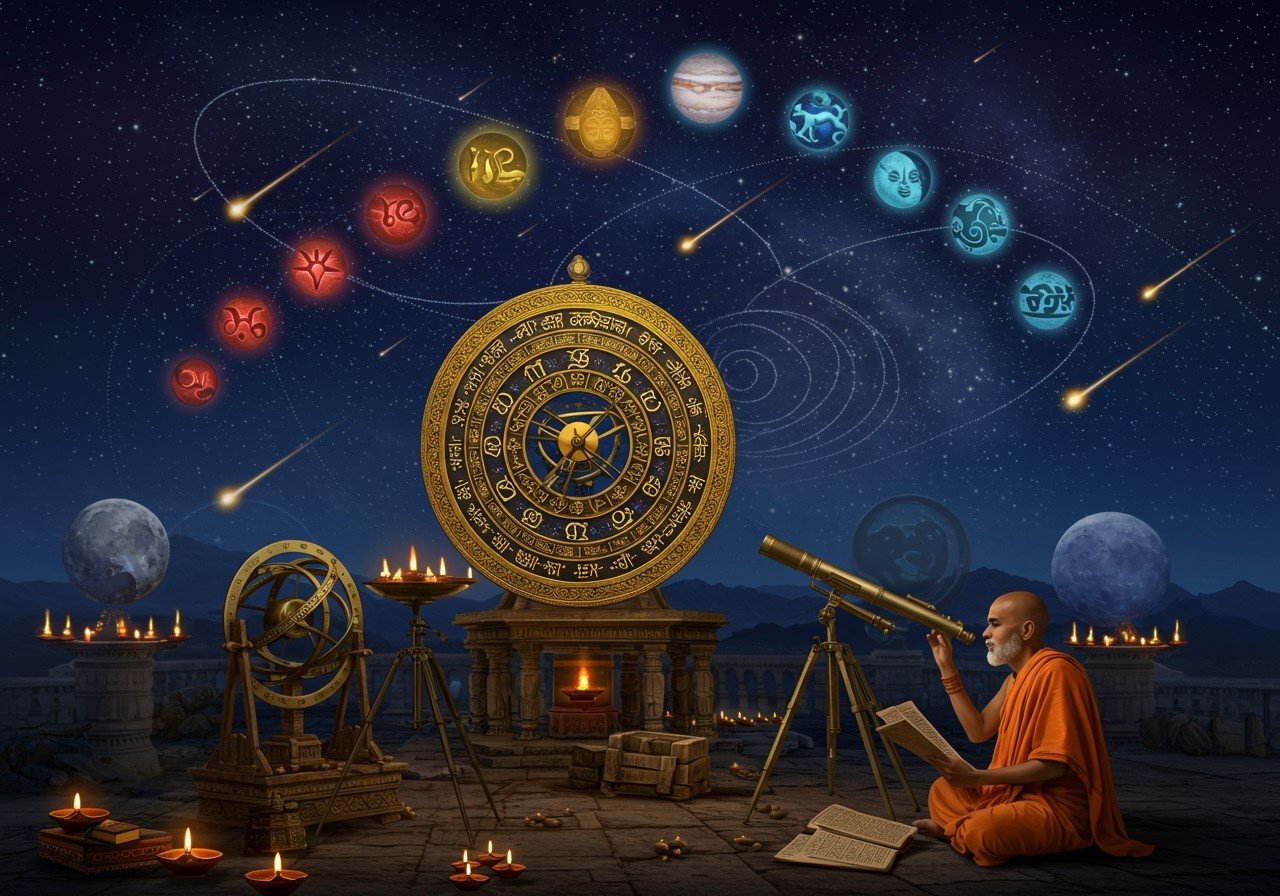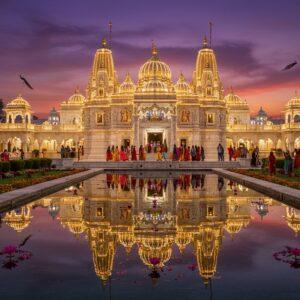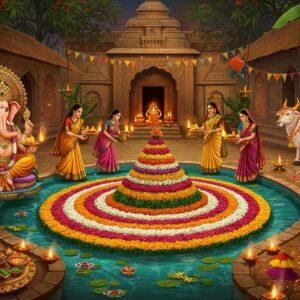
Vikram Samvat, an age-old calendar system, is deeply woven into the fabric of Indian tradition and astrology. More than just a way to mark time, it acts as a guide for festivals, rituals, and astrological calculations. Established by King Vikramaditya in 57 BCE, this lunisolar calendar remains remarkably relevant even today, reflecting its profound cultural significance.
Understanding the Vikram Samvat Calendar
Vikram Samvat, a traditional calendar with deep roots in India, is primarily used in historical and religious settings. It beautifully blends lunar months with solar years, structuring the year into 12 months that dance in harmony with the moon’s phases. This unique structure holds immense cultural and religious significance, especially for festivals and sacred rituals.
-
Lunar Months: Each month in the Vikram Samvat calendar is a reflection of the moon’s journey, making them a touch shorter than solar months. This connection to the lunar cycle adds a layer of spiritual depth to the calendar.
-
Solar Years: While rooted in the lunar cycle, the Vikram Samvat calendar also aligns itself with the sun’s position, ensuring a harmonious balance with the seasons and maintaining consistency with the agricultural cycle.
Think of festivals like Diwali, the festival of lights, and Holi, the festival of colors – Vikram Samvat determines their timing, emphasizing its integral role in traditional Indian society. It’s a living testament to our heritage, continuing to influence cultural practices and holding a cherished place in contemporary Indian life.
Vikram Samvat and the Kundli: A Celestial Connection
In Hindu astrology, the Kundli, or birth chart, is like a celestial map of one’s life, predicting significant events based on the positions of celestial bodies at the time of birth. Vikram Samvat, with its precise lunar-solar calculations, is the key to creating an accurate and insightful Kundli.
In Hindu culture, Muhurats, or auspicious moments, are determined by the Vikram Samvat calendar. These moments are carefully chosen for important life events like weddings and housewarmings, ensuring positive energy and blessings.
By synchronizing birth information with Vikram Samvat, astrologers unlock a deeper understanding of one’s destiny, offering personalized insights and guidance. Accurate birth details, aligned with Vikram Samvat, reveal crucial information like Tithis (lunar days) and Nakshatras (constellations), enhancing the precision of astrological readings.
The influence of Vikram Samvat extends beyond individual Kundlis, impacting community events and agricultural practices, particularly in rural India, where it’s deeply woven into the fabric of daily life.
The Role of Vikram Samvat in Astrological Calculations
Vikram Samvat holds a pivotal role in Hindu astrology. It’s the backbone of calculating planetary positions, crucial for making accurate predictions and understanding the cosmic dance of the heavens. This ancient calendar system ensures that astrological readings remain precise and aligned with traditional wisdom.
The calendar’s division of time into Tithis and Nakshatras provides essential building blocks for astrological insights. Astrologers rely on these divisions to offer guidance on various aspects of life, from career choices to health decisions, connecting individual lives to the celestial rhythm.
Vikram Samvat acts as the guardian of accuracy in astrological charts, offering clarity and insight to those seeking guidance in personal or professional matters. Understanding its influence allows us to appreciate its role in preserving the wisdom of ancient traditions.
Vikram Samvat vs. Gregorian Calendar: A Tale of Two Systems
Vikram Samvat and the Gregorian calendar, two distinct systems, differ in structure and cultural implications. While the Gregorian calendar follows a structured 365-day solar year, beginning on January 1st, the Vikram Samvat gracefully follows a lunisolar rhythm. This means that the Vikram Samvat’s new year varies, adding to its unique charm.
The Vikram Samvat calendar, deeply connected to the lunar cycle, aligns its months with the phases of the moon and its years with the solar cycle. This results in a new year that falls on different Gregorian dates each year, often celebrated as Chaitra Shukla Pratipada, marking the Hindu New Year. These differences significantly impact the celebration of festivals and religious observances, adding a dynamic element to our cultural calendar.
In modern India, both calendars coexist harmoniously, each serving a distinct purpose. While the Gregorian calendar governs official matters and daily life, Vikram Samvat gracefully holds its place in cultural and religious observances. This coexistence showcases India’s unique ability to blend tradition and modernity, honoring both its rich heritage and its contemporary needs.
The Enduring Cultural Relevance of Vikram Samvat
Vikram Samvat remains a vibrant thread in the tapestry of Indian culture, holding deep relevance in contemporary society. It’s a guardian of our traditions and rituals, especially in rural communities where age-old customs form the heart of social life.
Festivals that bring joy and unity, like Diwali and Holi, are timed according to Vikram Samvat, influencing cultural celebrations throughout India. These festivals are more than just events; they’re a celebration of shared heritage, bringing families and communities together.
Even in urban areas, there’s a growing movement to reconnect with traditional roots through Vikram Samvat. It reflects a yearning to embrace cultural identity in the midst of modern life’s complexities. By understanding the relevance of Vikram Samvat, we gain a deeper appreciation for its role in shaping the vibrant and diverse tapestry of Indian society.
Poojn.in: Your Guide to Vikram Samvat and Astrological Needs
Poojn.in is your trusted companion for all things related to Vikram Samvat and your astrological needs. We offer a curated selection of essential items for rituals and ceremonies observed according to the Vikram calendar:
-
Panchang (Hindu Calendar): Acquire authentic Panchangs that accurately reflect the Vikram Samvat, enabling you to keep track of important dates, festivals, and auspicious timings.
-
Puja Samagri: Source complete puja kits containing all the necessary items for festivals and ceremonies marked by the Vikram calendar, ensuring you have everything you need for a sacred and fulfilling experience.
-
Astrological Consultation: Connect with experienced and verified astrologers through our platform to seek personalized guidance on auspicious dates and timings, empowering you to make informed decisions aligned with your astrological chart.
For festivals dedicated to Lord Shiva that are observed according to the Vikram calendar, we offer a range of sacred items:
- Pure copper Shiva lingams
- Rudraksha malas
- Bilva patra
- Special puja thalis
- Premium dhoop and incense
Need assistance in choosing the right items? Our knowledgeable experts are here to help:
- Phone: 03369029784
- WhatsApp: 9476142738
Visit Poojn.in to discover a wide array of authentic puja items, conveniently delivered to your doorstep. All our products are carefully verified for quality and religious authenticity, ensuring that your rituals and observances, as guided by the Vikram Samvat traditions, are conducted with utmost reverence and accuracy.
Embracing Vikram Samvat in Our Modern Lives
Vikram Samvat serves as a beautiful bridge connecting India’s ancient wisdom with the fast-paced rhythm of modern life. As families and communities come together to celebrate festivals and perform rituals, this calendar ensures that the essence of our traditions remains vibrant and alive.
Whether planning a wedding or celebrating Diwali, Vikram Samvat brings a sense of precision and meaning to these cherished occasions. It’s more than just a calendar; it’s a reflection of our cultural identity, connecting us to the values and stories passed down through generations.
In a world that’s constantly evolving, Vikram Samvat offers a comforting reminder of the enduring power of tradition. Embracing it allows us to honor our heritage while stepping confidently into the future, ensuring that the rich tapestry of Indian culture continues to thrive.
Common Questions about Vikram Samvat and Astrology
What is Vikram Samvat’s role in a Kundli? Vikram Samvat, an ancient Indian calendar, helps determine auspicious dates and times within a Kundli. It’s structured around lunar months and solar years, making it an essential part of astrological calculations.
Why is Vikram Samvat important in astrology? Vikram Samvat plays a vital role in astrology by helping to calculate planetary positions and predict future events. It is deeply intertwined with traditional Hindu rituals and festivals, guiding their observance.
How does Vikram Samvat influence Kundli interpretations? Vikram Samvat provides precise timings for planetary movements, influencing the interpretation of Kundli readings. This precision allows astrologers to offer accurate predictions and personalized guidance.
What distinguishes Vikram Samvat from the Gregorian calendar? The key difference lies in their basis: Vikram Samvat follows the lunar cycle, while the Gregorian calendar adheres to the solar cycle. This makes Vikram Samvat essential for timing traditional and religious events.
Can Vikram Samvat be used in modern astrological practice? Absolutely! Vikram Samvat remains relevant in modern astrology. It provides a crucial cultural context, enriching the accuracy and relevance of astrological predictions.
Is Vikram Samvat still used in India today? Yes, Vikram Samvat continues to be widely used in many parts of India, particularly for religious and cultural observances. It holds a significant place in traditional practices and is a living part of our heritage.
How can I convert Gregorian dates to Vikram Samvat? You can easily convert Gregorian dates to Vikram Samvat using online tools or by referring to a traditional Panchang (Hindu calendar). This conversion allows you to align modern dates with traditional events and observances.


